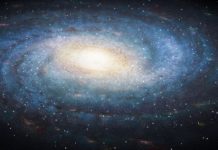“Matter from this cosmic body could give us information about the formation of the Moon and Earth and improve our knowledge of near-Earth asteroids,” said Aaron Rosengren, a professor at the University of California, one of the lead authors of the paper. Until now, only distant asteroids beyond the orbit of Mars were considered to be the sources of near-Earth asteroids. This study implies that there is still much lunar debris among near-Earth asteroids.
Near-Earth asteroid turned out to be a fragment of the Moon
The Kamoaleva asteroid is unusual in that it is almost a satellite of the Earth and at the same time orbits around the Sun. Another strange aspect of Kamoaleva is its prolonged stay in this orbit. The asteroid is expected to remain a satellite of Earth for millions of years to come, transitioning several times between its current pseudosatellite state and its horseshoe-shaped trajectory.
The research team wanted to determine the likelihood of a fragment of the Moon’s surface ending up in this pseudo-satellite orbit – an extremely unlikely phenomenon. Lunar debris that has enough kinetic energy to escape the Earth-Moon system usually has too much energy to enter Earth orbit.
When the team developed numerical simulations that took into account the gravitational forces of all the planets in the solar system, they found that there was a 6.6% chance that some lunar debris could end up in Earth’s orbit and an even rarer chance of up to 0.8%. , that this will be a trajectory similar to that of the asteroid Kamoalev.
Throughout history, the Moon has been bombarded by asteroids, as evidenced by the numerous impact craters preserved on its surface. These impacts eject lunar material from the lunar surface, but most of it usually falls back. Some ejected fragments become meteorites and fall to Earth. But a small fraction can leave the gravitational region of the Moon and Earth, moving into solar orbit, like other near-Earth asteroids. Numerical modeling suggests that Kamoaleva may be one of these very few fragments.
The study’s findings could help understand more about near-Earth asteroids, which are considered a threat to Earth. More detailed studies to determine the origin of the asteroid from a specific impact crater on the Moon will provide useful insights into the mechanics of the impact.





